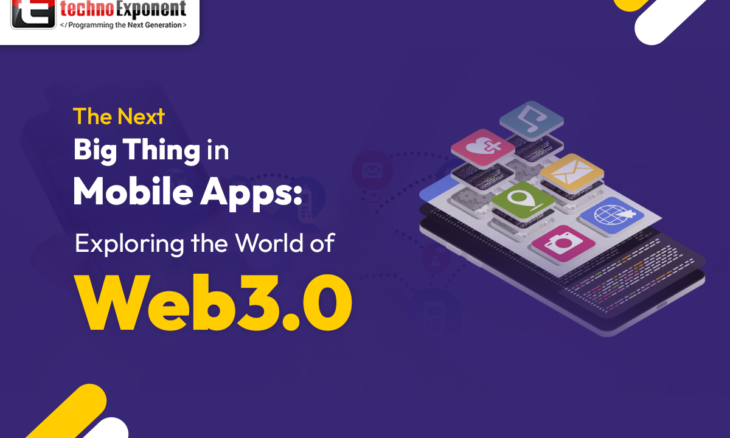
Web3 mobile apps are the next big thing that leverages blockchain and decentralized networks. These apps offer more security, privacy, and data control because they follow decentralized protocols. Like any other web 2.0 apps, these apps can also help you manage your digital profiles, conduct online transactions and share data securely.
Main characteristics of a web3 mobile app
- These apps are decentralized: they store their data across many computers that are owned by users. On the other hand, web2 apps store their data at a centralized location, making them vulnerable to attacks.
- They maintain transparency: users can track who has access to their data and how they can use it.
- These apps are interoperable which means they can communicate with other apps in the same network. So overall, these interoperable apps create a more connected ecosystem.
- Cryptocurrencies or tokens are integrated into these apps which makes the whole trading, banking, and rewarding thing easier and more secure.
- These apps can have smart contracts which take business agreements to another level.
Why are these apps a part of every round-table conversation?
Web 3 mobile apps are a hot topic in town because it brings two major trends together:
- The domination of mobile apps in our lives
- The shift toward decentralization
Mobile dominates as the primary device that people use to access the internet. Smartphones and tablets account for the majority of the traffic online. And clubbing mobile and web3 together stays on the top of the list for a few entrepreneurs who want to make things more secure and accessible.
But there are fundamental differences between a centralized app and a web3 mobile app. This is another reason why developers and entrepreneurs are way into this topic. They simply want to find out what new skills they need to learn or what new mindset they need to adopt in order to build a web3 mobile app.
Overview of the architecture of Web3.0 mobile apps
If you are creating a Web3 app, you should know that the frontend elements are very similar to Web2 apps. But the backend leverages blockchain technology and decentralized networks. And the heart of this backend architecture is made out of Blockchain Nodes. The mobile app interacts with smart contracts and other elements in the network through this node. It also works as a bridge between off-chain and on-chain data storage. Off-chain data storage plays an important role because when the total amount of data stored in the blockchain increases, it grows slower and more expensive but off-chain storage allows developers to store data offshore. The apps also implement private key-based authentication to confirm a user’s identity. This is just a rough idea of how architecture works.
How are Web3 mobile apps different?
Unlike Web2 mobile apps, Web3 apps don’t rely on a centralized server to store data. That’s why they are not vulnerable to security threats, data breaches, and hacking. Instead, they store their data in the blockchain itself where users can control who has access to that data.
The second big thing about these apps is that they can interact with other dApps like DeFi, NFT marketplaces, and more. So basically, it is a whole chain of interconnected applications.
Some web3 apps also employ 3D graphics to create an interactive and immersive user experience. Decentraland is a prime example of one such app, it’s a metaverse built on the Ethereum blockchain where users can select their own virtual 3d avatars and interact with others in this virtual world.
Use cases of web3 mobile apps
Cryptocurrency wallets: These mobile apps will let you store, receive and send crypto coins like Bitcoin, Ethereum, Tether, and more. It is a digital asset management app for all mobile devices.
DeFi apps: These mobile apps allow you to lend, borrow, and trade with no intermediaries. They also let you earn interest on digital assets.
NFTs: These apps allow users to buy and sell unique digital collectibles like artworks, music, and more. They offer a secure marketplace for creators, buyers, and traders.
Identity management: These apps allow users to manage their digital identity on the blockchain. Users have full control over their personal information.
Supply chain management: Users can track and manage the supply chains through these apps. It increases transparency in product delivery.
Gaming: Users can play games in these apps and earn rewards in the form of NFTs or cryptocurrencies that they can trade later.
Conclusion
Web3 mobile apps can be the future of mobile app development since they have several advantages over traditional mobile apps including security, transparency, and innovation. If you invest in building a web3 mobile app, your business can get a competitive edge since you will provide an innovative way of interacting and transacting with the users.
 +44 141 628 8980
+44 141 628 8980
 (786) 269-2247
(786) 269-2247
 +61 872007153
+61 872007153
 +91 8900027268 (Sales only)
+91 8900027268 (Sales only)








